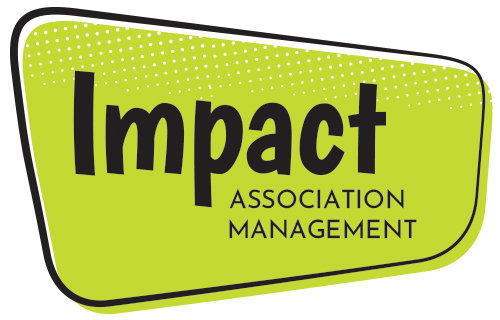By Hannah Lier, Association Manager, Impact AMC
This past year, I had the honor of being involved in the inaugural Association Leadership Academy (ALA) through the Wisconsin Society of Association Executives (WSAE). Over the course of twelve months, the program provided a blend of general education and association-specific knowledge, featuring insights from esteemed guest speakers who are experts in the field. Here are my key takeaways:
Don't ignore conflicts!
As Mary Dean, Executive Director of the Society for Immunotherapy of Cancer, puts it, conflicts are inevitable because people often have differing goals. One key lesson I learned is that conflicts should never be ignored in the hope that they will resolve themselves. Failing to address conflict can lead to consequences like diminished trust, poor decision-making, and misalignment with the association's mission or vision. To effectively manage conflict, it's important to rely on clear policies or procedures, encourage open communication, engage in collaborative problem-solving to consider various perspectives, and seek assistance when needed.
Relationships over transactions!
As Michelle Vetterkind, CAE, President and CEO of the Wisconsin Broadcasters Association, emphasizes, associations are fundamentally about fostering peer-to-peer connections. The primary reason individuals join associations is the opportunity to connect with others in their industry and build relationships around shared interests. Associations should prioritize creating trust and strengthening relationships—not just among members, but also between members and staff, as well as with industry leaders.
Board of directors governs, staff manages.
This distinction is crucial, especially when it comes to board governance. Mike Theo, CAE, Past President and CEO of the Wisconsin Realtors Association, asserts that for an association to operate at its highest potential, each division must focus on its strengths. For the board of directors, this means overseeing the entire organization and guiding its direction by leveraging their experience, background, and industry knowledge. Conversely, it is the staff's role to implement the board's decisions. Ultimately, both the board and the staff should share a unified vision that aligns with the association’s broader purpose and mission—the "why" behind its work.
Make sure the vision of the conference is at the forefront.
When it comes to events, the details make all the difference. With that in mind, Michelle Eggert, CMP, CDS, Director of Global Accounts at ConferenceDirect, and Marin Medema, CMP, Senior Sales Executive at The Osthoff Resort, emphasize that the overall vision should be consistently referred to throughout the planning process. This ensures that the event planning team and venue staff make decisions that stay aligned with the event's core purpose, ultimately leading to a successful experience for members.
Creating a personal network is essential.
One of the benefits of this program was the opportunity to participate alongside over 15 other young association professionals from different association management companies and industries. It provided an excellent chance to connect with peers, both virtually and in person, at several WSAE events throughout the year. I found it particularly valuable to collaborate with individuals from other association management companies, exchange ideas, and learn how their operations compared to those at Impact AMC.
Overall, I truly valued the opportunity to participate in the ALA program, leaving with a deeper understanding of both myself and the association world. A big thank you to Impact and WSAE for giving me the chance to be part of the inaugural class. I’m excited to see how this program continues to evolve in the future!

